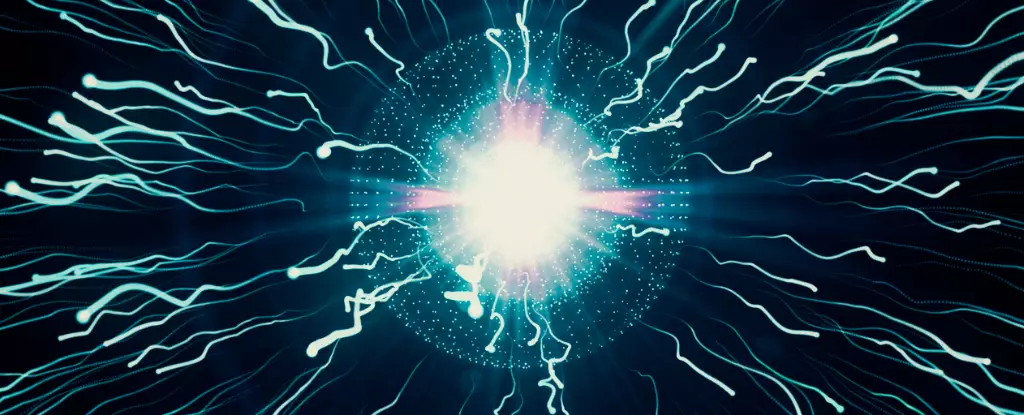For over a decade, scientists have become increasingly intrigued by the complex behavior of subatomic particles, particularly neutrons. At the critical nexus of particle physics lies a mystery that has evaded resolution: the internal structure of neutrons and the swirling tempest of particles that exist within them. Recent findings from the Central Neutron Detector at the Thomas Jefferson National Accelerator Facility (TJNAF) signal significant progress in unraveling this enigmatic subject. Research conducted here has begun to map the intricate dynamics that govern neutron existence, ultimately aiding our comprehension of the building blocks of matter.
At the core of atomic structure, neutrons and protons — collectively termed nucleons — house even smaller entities called quarks. Quarks engage in an elaborate dance, bound together by the force-carrying particles known as gluons. The conventional understanding delineates a proton as being composed of two ‘up’ quarks and one ‘down’ quark. Conversely, the neutron consists of two ‘down’ quarks and one ‘up’ quark. While this simplified view presents a semblance of order, the reality lurking beneath is far more chaotic. Quarks and corresponding antiquarks exist in a frenetic state, constantly vying for dominance within a quantum framework that can only be grasped through intricate scientific investigations.
The Techniques of Discovery
Traditional methodologies for studying the properties of quarks within nucleons have involved bombarding nuclear particles with high-energy electrons. These collisions generate a series of data that, when analyzed, reveal the internal dynamics of nucleons. To handle the complexities of these findings, physicists often categorize quarks and gluons into distinct units called partons. This framework has proved to be particularly effective for studying protons; however, neutrons present unique challenges due to their propensity to emit particles at angles that complicate detection.
Despite these hurdles, the scientific community’s commitment to understanding neutron dynamics remains steadfast. In 2011, researchers embarked on a collaborative project, constructing a highly specialized detector designed to unveil the mysteries surrounding neutrons. By 2017, this innovative tool was installed and tested, with preliminary experimental runs commencing in subsequent years.
The journey towards understanding neutrons was fraught with difficulties. Early experiments were plagued by the unintended intrusion of protons that distorted the data. To correct these issues, scientists implemented a sophisticated machine-learning filter, streamlining the analysis process and allowing for more accurate data interpretation. This iterative resolution culminated in significant breakthroughs, with the first scientific study utilizing these results highlighting one of the most elusive aspects of neutron structure: the generalized parton distribution (GPD) E.
Significance of GPD E
GPD E has emerged as a crucial parameter in probing the spin structure of nucleons. Spin, a fundamental property akin to angular momentum, is a cornerstone of quantum physics. Historically, investigations into the spin contributions of quarks within nucleons indicated that they accounted for only about 30 percent of the total spin, leading to an ongoing paradox dubbed the “spin crisis.” The question remains: where do the remaining spin contributions originate? Are they rooted in interactions with gluons or from obscure phenomena yet to be identified?
This conundrum has serious implications for future research, as understanding the entire spectrum of nucleon spin could elucidate critical aspects of quantum mechanics and the fundamental forces that govern matter. The insights garnered from comparing neutrons and protons are poised to propel scientific inquiry into new realms, offering potential breakthroughs in the field.
Looking to the Future
As researchers continue to analyze the data produced by experiments conducted at TJNAF, we stand on the cusp of a new era in particle physics. The collaborative efforts of physicists, armed with advanced technology and innovative techniques, promise to furnish unparalleled insights into the nature of neutrons and the dynamics of quarks and gluons. With each discovery, we edge closer to solving the fundamental puzzles of our universe, uncovering the intricate workings of matter at its most elementary level. The journey to comprehend the quantum storms within neutrons is just beginning, and the future holds the potential for transformative revelations in the realm of subatomic particles.


Leave a Reply